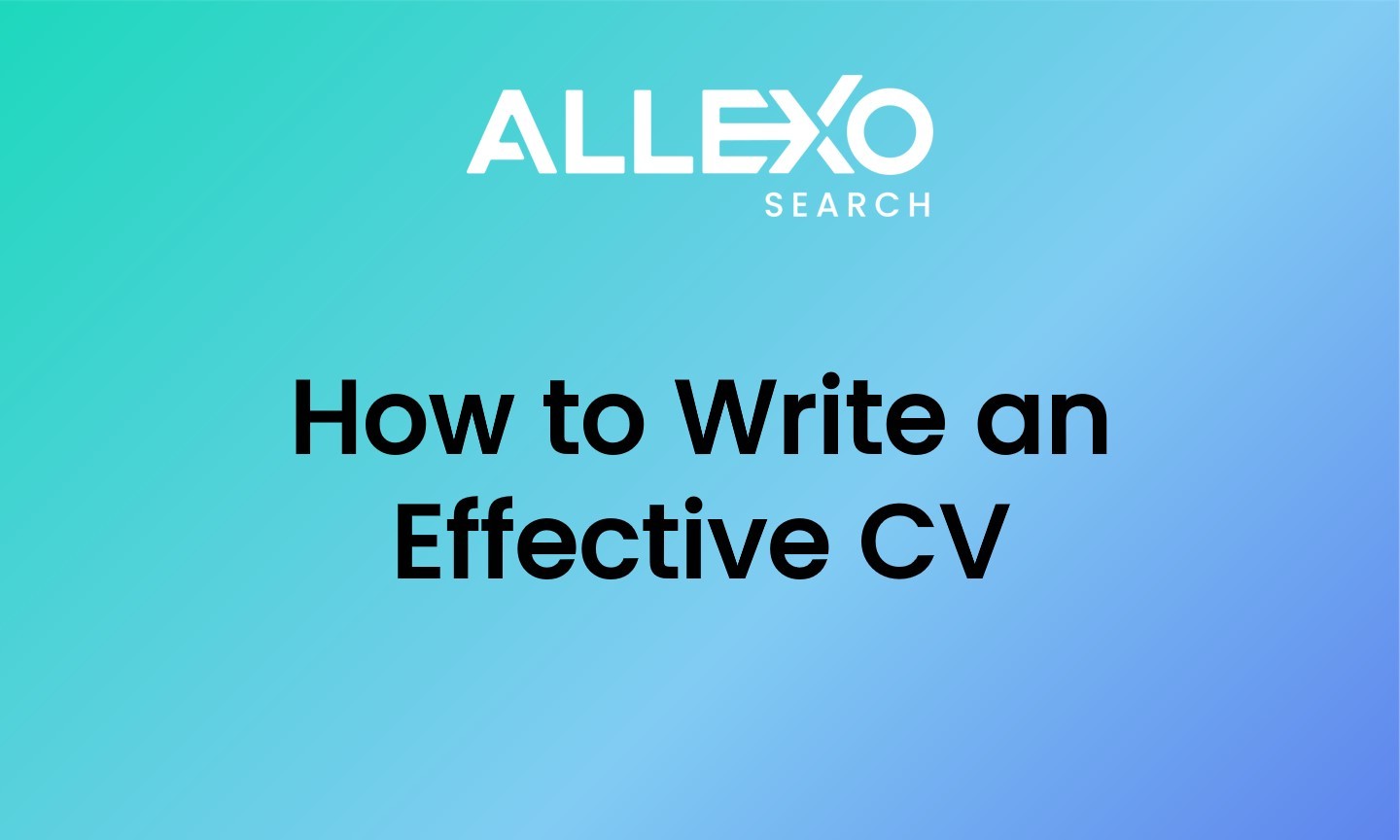In 2025, writing a standout CV isn’t about cramming your entire career into two pages — it’s about telling a compelling story that aligns your experience with the needs of the employer. With competition still fierce and hiring managers spending just 6–8 seconds on an initial CV scan, the way you present yourself on paper has never mattered more.
Whether you're job hunting in FMCG, tech, finance, or creative industries, the principles of a strong CV remain largely the same — with a few key updates to reflect the current market and recruitment tech. Here's how to make sure your CV works for you in 2025.
1. Start with a Clear, Concise Profile
Your personal profile (or summary) is the first thing most recruiters will read — so make it count. This is not the place to list every skill or buzzword; it’s your elevator pitch.
- Focus on who you are, what you bring, and what you’re looking for
- Keep it to 3–5 lines
- Align it with the industry or type of role you're targeting
Example:
"Commercially focused National Account Manager with 8+ years’ experience in FMCG, leading top-4 retail accounts and delivering consistent double-digit growth. Passionate about brand building, customer relationships and team development. Seeking a new challenge in a purpose-led, high-growth consumer brand."
2. Structure Matters — Keep It Clean and Easy to Scan
Your CV layout should be clean, logical, and scannable. Use clear headings, plenty of white space, and avoid overly designed formats unless you’re in a creative role.
A strong CV layout in 2025 looks like this:
- Name & Contact Info (email, phone, LinkedIn)
- Profile
- Key Skills or Areas of Expertise
- Professional Experience (most recent first)
- Education & Qualifications
- Optional: Languages, Awards, Volunteering, Technical Skills
Tip: Avoid including a photo or full home address on your CV — it's unnecessary and can introduce bias.
3. Show Impact, Not Just Activity
Recruiters don’t just want to know what you did — they want to know what changed because of you.
Swap vague responsibilities for measurable achievements:
Instead of: “Responsible for managing key accounts”
Try: “Managed £25m Tesco account, delivering +18% YoY growth and securing exclusive listings in 3 new categories”
Instead of: “Worked on digital campaigns”
Try: “Led paid social campaign generating 3.5x ROAS and 25% uplift in brand awareness”
Wherever possible, include metrics, percentages, or business outcomes to show commercial impact.
4. Use Bullet Points, Not Paragraphs
Big blocks of text are a turn-off — and in a world where recruiters are skim-reading, bullet points are your best friend.
Aim for 4–6 bullet points per role, and start each one with a strong action verb:
- Delivered
- Led
- Increased
- Streamlined
- Launched
- Negotiated
- Built
- Improved
Keep them short, focused, and results-driven.
5. Use Space Wisely — Keep It Updated and Focused
There’s no hard rule that your CV must be two pages, but it’s vital to use the space effectively. One of the most common mistakes is letting your CV grow too long by including outdated or irrelevant roles.
In 2025, hiring managers want to see your most recent and relevant experience — not every job you've ever had. Focus on the past 5–10 years, especially roles aligned to the job you're applying for.
- Make sure your most recent roles are fully up to date
- Shorten older or less relevant roles to 1–2 lines
- Remove outdated content (e.g. early part-time jobs or old qualifications)
- Be selective, not exhaustive
Your CV should tell a clear, current story — not a career autobiography.
6. In 2025, LinkedIn is Part of Your CV
Hiring managers will almost always check your LinkedIn profile — make sure it aligns with your CV. The content doesn’t need to match word for word, but dates, job titles and tone should be consistent.
- Use a professional photo
- Write a compelling headline (not just “Open to Work”)
- Include a short ‘About’ section with career highlights
- Ask for 2–3 recommendations from colleagues or managers
- Share or engage with relevant content to show you’re active
Tip: Include your LinkedIn URL at the top of your CV and customise it (e.g. linkedin.com/in/yourname).
7. Include Skills and Tools — but Keep It Relevant
Add a section that highlights key systems, tools or capabilities — especially if they're mentioned in the job spec.
For example:
- P&L ownership
- Nielsen/IRI/Kantar data
- Salesforce / HubSpot
- Power BI / Tableau
- Digital marketing strategy
- Shopper marketing
- Amazon / e-commerce account management
Only include what’s relevant. Keep it concise and industry-specific.
8. Don’t Forget Soft Skills — But Prove Them
It’s one thing to say you’re a “strong communicator” — it’s another to demonstrate it. In hybrid or remote roles especially, soft skills matter. Show them through achievements, not adjectives.
Rather than list soft skills, weave them into your accomplishments:
- Built strong cross-functional relationships to deliver a £2m innovation launch
- Mentored two junior execs, both now promoted internally
- Led virtual EMEA team meetings across multiple time zones
9. Proofread, Proofread, Proofread
Spelling and grammar errors are still one of the top reasons CVs are rejected — and a spellchecker won’t catch everything. Proofread carefully, and ideally get a second pair of eyes to check it too.
Attention to detail is a reflection of your professionalism.
Final Thoughts
Your CV isn’t just a summary of your career — it’s a sales document. In a competitive market like 2025, it needs to tell a compelling, focused story of the value you bring.
Remember: your CV gets you the interview. The interview gets you the job.
Need help writing or reviewing your CV?
At Allexo Search, we specialise in commercial, sales, marketing and category roles across the FMCG sector. If you’re planning your next move and want tailored advice, get in touch — we’d be happy to help.




